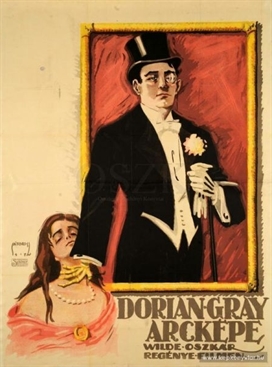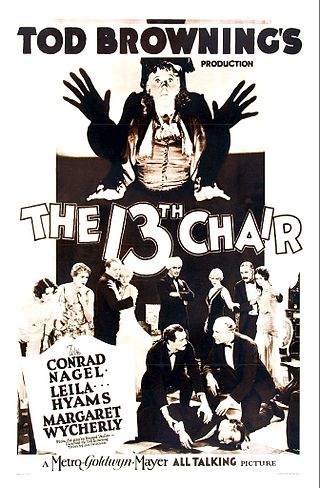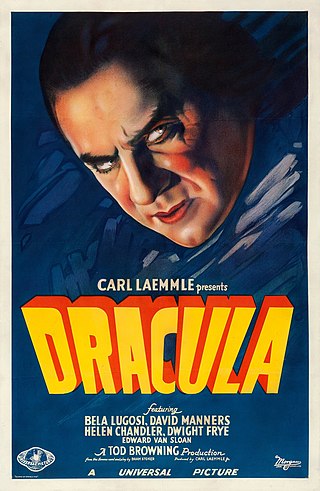
Béla Ferenc Dezső Blaskó, known professionally as Bela Lugosi, was a Hungarian–American actor, best remembered for portraying Count Dracula in the 1931 horror film classic Dracula, Ygor in Son of Frankenstein (1939) and his roles in many other horror films from 1931 through 1956.
Scared to Death is a 1947 American gothic thriller film directed by Christy Cabanne and starring Bela Lugosi, George Zucco, Nat Pendleton and Molly Lamont. The picture was filmed in Cinecolor. The film is historically important as the only color film in which Bela Lugosi has a starring role. Lionel Atwill was originally slated to appear in the film, but he was too ill to work, so George Zucco replaced him in the cast. Christy Cabanne completed the film in early 1946, but it wasn't screened until 1947.

Abbott and Costello Meet Frankenstein is a 1948 American horror comedy film directed by Charles Barton. The film features Count Dracula who has become partners with Dr. Sandra Mornay, as Dracula requires a "simple, pliable" brain to reactivate Frankenstein's monster. Dracula discovers that the "ideal" brain belongs to Wilbur Grey who is wooed by Mornay to the operating table, despite the warnings of Lawrence Talbot.

Dracula is a 1931 American pre-Code supernatural horror film directed and co-produced by Tod Browning from a screenplay written by Garrett Fort and starring Bela Lugosi in the title role. It is based on the 1924 stage play Dracula by Hamilton Deane and John L. Balderston, which in turn is adapted from the 1897 novel Dracula by Bram Stoker. Lugosi portrays Count Dracula, a vampire who emigrates from Transylvania to England and preys upon the blood of living victims, including a young man's fiancée.

Arsenic and Old Lace is a play by American playwright Joseph Kesselring, written in 1939. It has become best known through the 1944 film adaptation starring Cary Grant and directed by Frank Capra.

Bela Lugosi (1882–1956), best known for the original screen portrayal of Bram Stoker's Dracula in 1931, performed in many films during the course of his 39-year film career. He appeared in films made in his native Hungary, Germany and New York before re-locating to Hollywood in 1928. Films are listed in order of release.

Der Januskopf is a 1920 German silent film directed by F. W. Murnau. The film was an adaptation of Robert Louis Stevenson's 1886 novella The Strange Case of Dr. Jekyll and Mr. Hyde. Little is known about the production; it was shot and previewed under the title Schrecken with production starting in either February or March 1920.

Murders in the Rue Morgue is a 1932 American horror film directed by Robert Florey, based on Edgar Allan Poe's 1841 short story "The Murders in the Rue Morgue". The plot is about Doctor Mirakle, a carnival sideshow entertainer and scientist who kidnaps Parisian women to mix their blood with that of his gorilla, Erik. As his experiments fail because of the quality of his victims' blood, Mirakle meets with Camille L'Espanye, and has her kidnapped and her mother murdered, leading to suspicion falling on Camille's fiance, Pierre Dupin, a medical student who has already become interested in the earlier murders.

The Ape Man is a 1943 American horror film directed by William Beaudine. The film is based on "They Creep in the Dark" by Karl Brown, which was published in The Saturday Evening Post. It stars Bela Lugosi as Dr. James Brewster who is aided by his colleague Dr. Randall. The doctor manages to transform himself into a ape man hybrid and desperately seeks a cure. Brewster believes that only the injection of human spinal fluid will prove effective as a cure. As Randall refuses to help him, Brewster and his captive gorilla seek involuntary donors.
99-es számú bérkocsi is a 1918 Hungarian crime drama film directed by Michael Curtiz. The film is sometimes just referred to as 99.
A Régiséggyüjtö is a 1918 short comedy Hungarian film directed by Alfréd Deésy and featuring Béla Lugosi and Norbert Dan. The film's title could also translate as The Antique Dealer.
Küzdelem a létért is a 1918 Hungarian drama film directed by Alfréd Deésy. It is based on French writer Alphonse Daudet's 1889 play La lutte pour la vie. The film was advertised and discussed in Hungarian trade publications as A Leopard.
Lili is a 1917 Hungarian comedy film directed by Cornelius Hintner. The film was first shown on 21 October 1917 at the Urania Theater in Budapest. Some sources list Bela Lugosi in the cast, but that is unverified.

Az élet királya is a 1918 Hungarian film directed by Alfréd Deésy. It is an adaptation of The Picture of Dorian Gray by Oscar Wilde.
Hypnose: Sklaven fremden Willens is a 1920 German silent film directed by Richard Eichberg. It was the first German production actor Bela Lugosi made in Germany, following Bruno Declari leaving Eichberg-Film to form his own production company.
Daughter of the Night is a German drama film directed by Richard Eichberg. The film is about a French aristocrat who falls in love with a Russian nightclub singer, and his attraction to her involves him in a Russian revolutionary movement.

The Thirteenth Chair is a 1929 American mystery film directed by Tod Browning. The picture is based on a 1916 play of the same name by Bayard Veiller. It stars Conrad Nagel, Leila Hyams and Margaret Wycherly.

Dracula is a film series of horror films from Universal Pictures based on the 1897 novel Dracula by Bram Stoker and its 1927 play adaptation. The series is a loose collection of films, with historians stating that the films all reference characters, events or at least passing knowledge of the 1931 English-language production of Dracula, with historians noting that Dracula's Daughter and Son of Dracula are more closely related to the 1931 film while the character of Dracula would make smaller appearances in later films such as House of Frankenstein and House of Dracula. After Dracula's Daughter, the character of Dracula and other vampires in the series became more Americanized, starting with the release of Son of Dracula, and the later House of films. The character of Dracula appears in all the films outside of Dracula's Daughter, where he is portrayed by Bela Lugosi, Lon Chaney Jr., and John Carradine in the House of films.

The history of horror films was described by author Siegbert Solomon Prawer as difficult to read as a linear historical path, with the genre changing throughout the decades, based on the state of cinema, audience tastes and contemporary world events.

Murder Legendre is a fictional character and the antagonist of the 1932 black-and-white horror film White Zombie where he was portrayed by actor Bela Lugosi.













